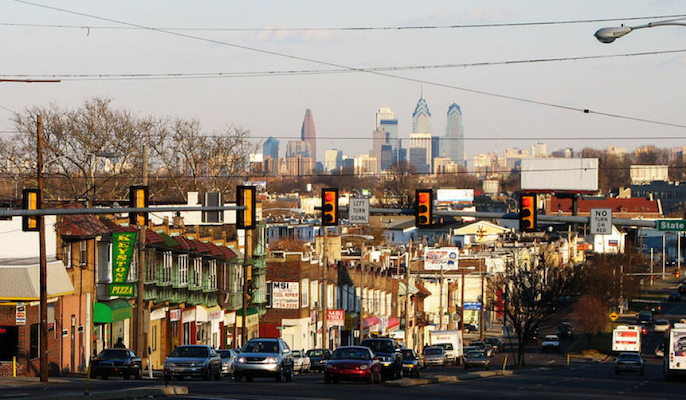
Anti-Muslim sentiment is alive and growing in America. Between 2003 and 2014, the share of Americans disapproving of their child marrying a Muslim increased from 34 to 50 percent, with Muslims comprising the least desirable marriage partners, compared to atheists, gays, Jews, and African Americans.
Similarly, the percentage of Americans reporting that Muslims “do not agree at all with their vision of American society” increased from 26 to 45 percent, with Muslims comprising the most distrusted group.
Despite growing animosity towards Muslims, we know very little about the kinds of neighborhoods where they live. Urban scholars have had a long-standing interest in where minority groups live because neighborhoods provide connections to a society’s majority members, economic and educational opportunities, and enhancements to health and quality of life. Because we lack data on where people of different religious backgrounds live in the United States, Muslims’ residential patterns have remained absent from these studies.
In what we believe to be the first, U.S.-based study of Muslims’ residential attainment, we find that Muslims experience greater residential disadvantages than non-Muslims in Philadelphia. Moreover, black Muslims face a double disadvantage due to both their race and their religion.
Philadelphia provides an excellent case study for our research. Reflecting national trends, Muslims in Philadelphia account for just over 1 percent of the population. What is unique to the Philadelphia area is that the majority of Muslims are black, compared with 20 percent at the national level.
The metropolitan area ranks fourth nationwide in the number of mosques. Reflecting this group’s visibility, the Philadelphia School District added two Muslim holidays to its 2017 calendar. But Philadelphia’s Muslims are not immune to the anti-Muslim sentiment that plagues their brothers and sisters nationwide. For instance, in 2015 a pig’s head was discovered in front of the Al-Aqsa mosque in North Philadelphia.
Our study uses data gathered from household surveys in the Philadelphia metropolitan area in 2004, 2006, and 2008. The data contain information on people’s religious affiliations, race, socioeconomic characteristics, and demographic factors. We combine these data with information on neighborhoods from the 2005-2009 American Community Survey.
Like previous urban research, we focus on the racial composition and economic status of neighborhoods to measure individuals’ residential attainment. A neighborhood’s economic level has important consequences for individual well-being. The racial composition of the neighborhood gauges people’s contact with society’s majority-group members.
This is particularly important in the Philadelphia metropolitan area, because, since 1970, urban scholars have characterized Philadelphia as “hypersegregated” by race. Simply put, this means that whites and blacks live in different neighborhoods. Hypersegregation has resulted in better neighborhood conditions for whites, including better school quality, access to jobs, health-care services, and lower levels of crime.
Where do minority groups like Muslims reside in this polarized racial context? Scholars consider Muslims’ proximity to the majority group, non-Hispanic whites, to be a key indicator of integration into American society.
Our analyses find significant Muslim/non-Muslim disparities in neighborhood characteristics. Muslims live in neighborhoods with fewer majority-group residents than non-Muslims, even after taking into account their socioeconomic and demographic characteristics like income, education, and family status. Among blacks, Muslims are 30 percent less likely than non-Muslims to live in suburban neighborhoods.
With respect to the economic status of neighborhoods, measured by median household income or poverty level, we find no significant differences between Muslims and non-Muslims.
Our results clearly point to the salience of race rather than economics to the neighborhood outcomes of Muslims in Philadelphia. Muslims are less likely to reside near majority-group members and more likely to live alongside minorities.
While our research cannot clearly establish the causes of such disparities, it is likely that the anti-Muslim sentiment documented elsewhere impacts Muslims’ residential opportunities. Muslims in the Philadelphia area are also more likely to face increased housing discrimination than non-Muslims, which limits them to neighborhoods with fewer whites. This finding is consistent with other research that has found housing discrimination against people with Arab-sounding names.
Our findings for black Muslims are particularly striking. They face a double disadvantage based on both race and religion. They reside in neighborhoods with fewer whites and more blacks, and they are also less likely to live in suburbs.
By 2050, the Muslim population is expected to more than double in size. The inequalities we have documented will likely persist or even grow, given the increases in anti-Muslim sentiment. Because residence is linked to the establishment of social networks with majority-group members, educational and employment opportunities, and environmental quality and health, these residential inequalities will no doubt have implications for disparities experienced by future generations of Muslims.
Just over 50 years ago the Fair Housing Act (FHA) was established to protect persons from discrimination on the basis of race, religion, and national origin, among other sociodemographic characteristics.
Our findings suggest one important step to take to reduce these inequalities is raising Muslims’ awareness about the protections afforded to them by the FHA so that they can actively file housing discrimination complaints. Another step would be for fair housing organizations to proactively monitor discrimination against Muslims in the local housing market. Only when these injustices are exposed and challenged can we ensure that Muslims have fair and equal access to housing in Philadelphia and elsewhere in the U.S.
Read more
Samantha Friedman, Recai M. Yucel, Colleen E. Wynn, and Joseph R. Gibbons. “Muslim-Non-Muslim Locational Attainment in Philadelphia: A New Fault Line in Residential Inequality?” Demography 2019.
Image: Lucius Kwok via Wikimedia Commons (CC BY-SA 2.0)

No Comments